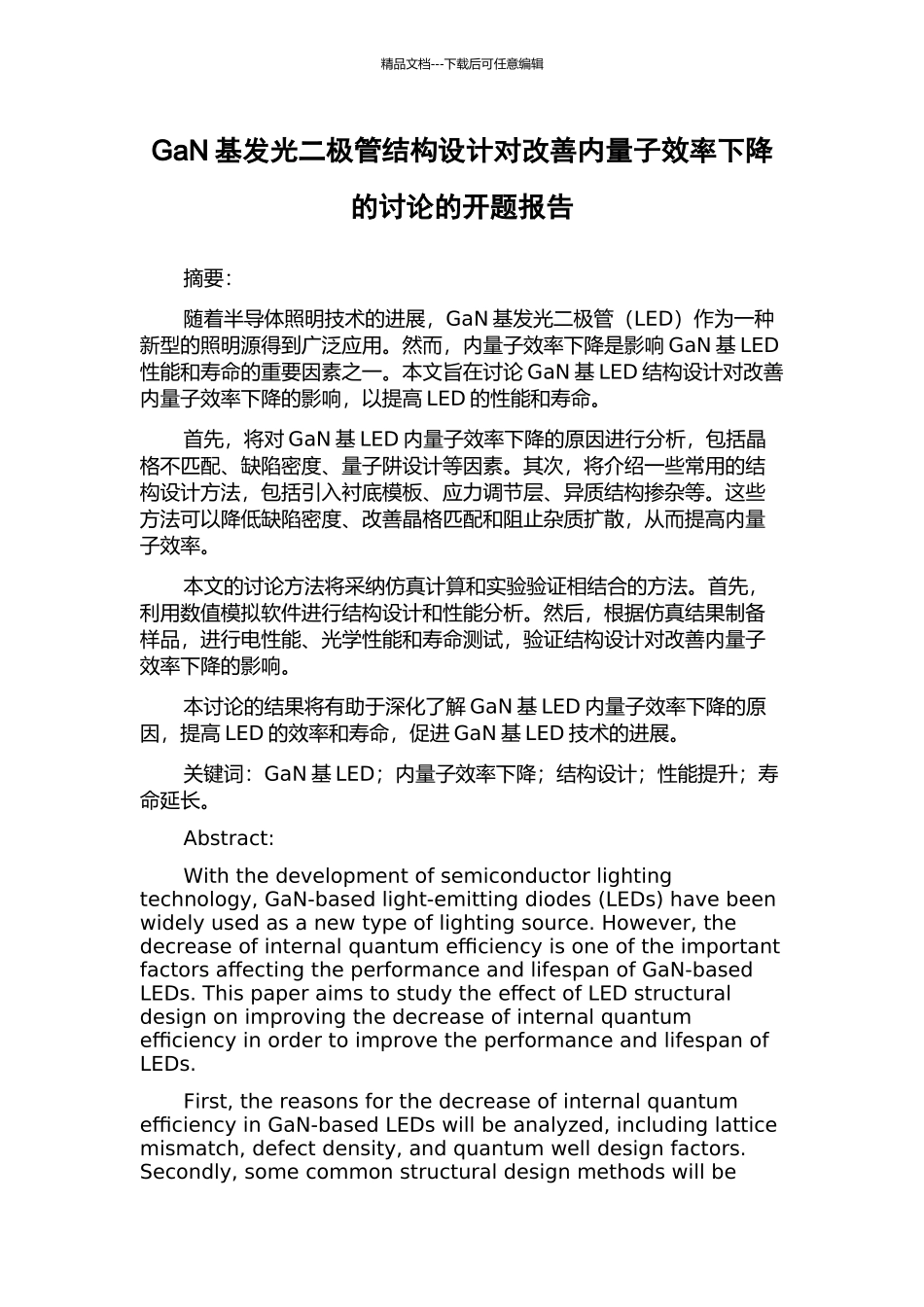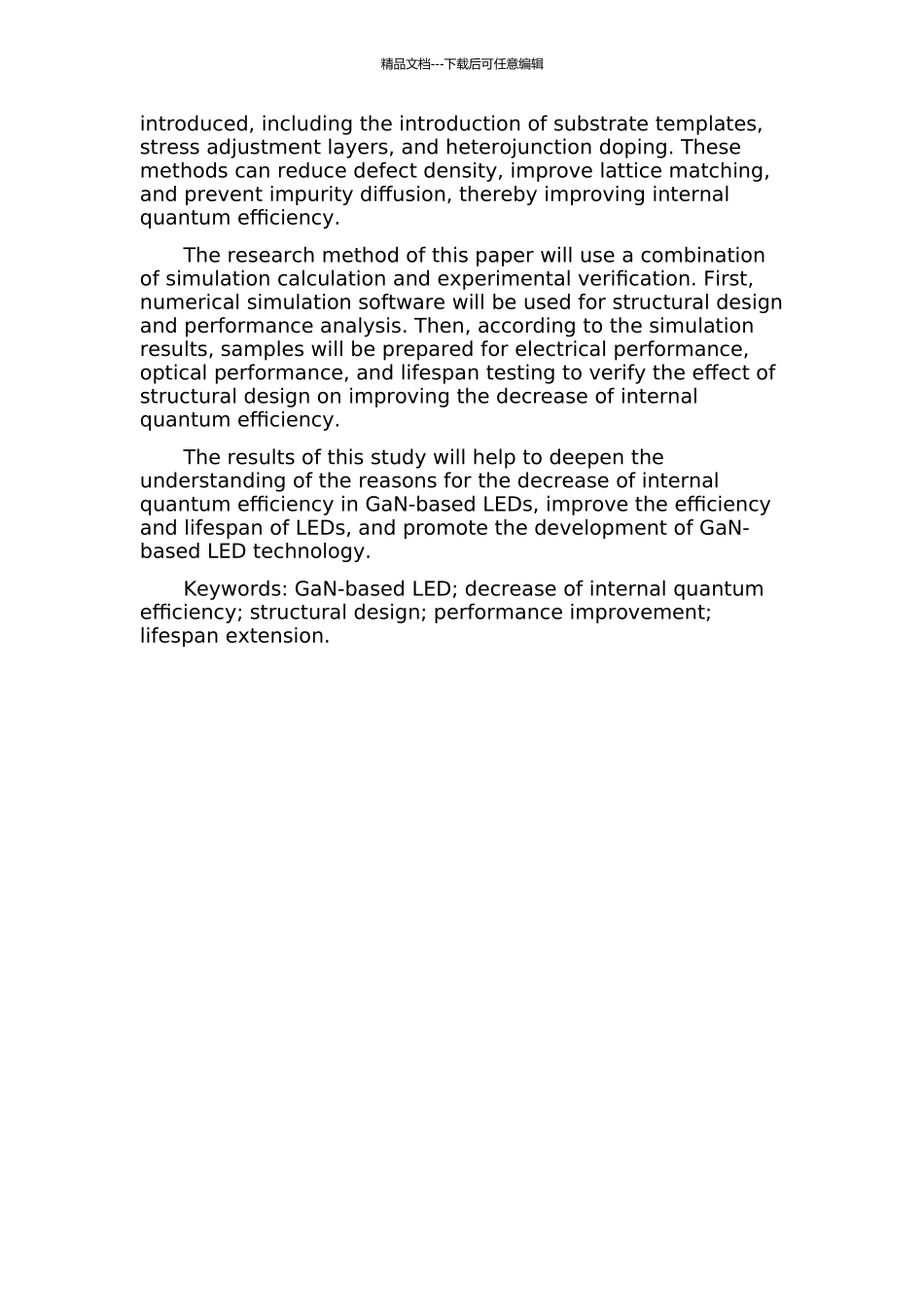精品文档---下载后可任意编辑GaN 基发光二极管结构设计对改善内量子效率下降的讨论的开题报告摘要:随着半导体照明技术的进展,GaN 基发光二极管(LED)作为一种新型的照明源得到广泛应用。然而,内量子效率下降是影响 GaN 基 LED性能和寿命的重要因素之一。本文旨在讨论 GaN 基 LED 结构设计对改善内量子效率下降的影响,以提高 LED 的性能和寿命。首先,将对 GaN 基 LED 内量子效率下降的原因进行分析,包括晶格不匹配、缺陷密度、量子阱设计等因素。其次,将介绍一些常用的结构设计方法,包括引入衬底模板、应力调节层、异质结构掺杂等。这些方法可以降低缺陷密度、改善晶格匹配和阻止杂质扩散,从而提高内量子效率。本文的讨论方法将采纳仿真计算和实验验证相结合的方法。首先,利用数值模拟软件进行结构设计和性能分析。然后,根据仿真结果制备样品,进行电性能、光学性能和寿命测试,验证结构设计对改善内量子效率下降的影响。本讨论的结果将有助于深化了解 GaN 基 LED 内量子效率下降的原因,提高 LED 的效率和寿命,促进 GaN 基 LED 技术的进展。关键词:GaN 基 LED;内量子效率下降;结构设计;性能提升;寿命延长。Abstract:With the development of semiconductor lighting technology, GaN-based light-emitting diodes (LEDs) have been widely used as a new type of lighting source. However, the decrease of internal quantum efficiency is one of the important factors affecting the performance and lifespan of GaN-based LEDs. This paper aims to study the effect of LED structural design on improving the decrease of internal quantum efficiency in order to improve the performance and lifespan of LEDs.First, the reasons for the decrease of internal quantum efficiency in GaN-based LEDs will be analyzed, including lattice mismatch, defect density, and quantum well design factors. Secondly, some common structural design methods will be 精品文档---下载后可任意编辑introduced, including the introduction of substrate templates, stress adjustment layers, and heterojunction doping. These methods can reduce defect de...

